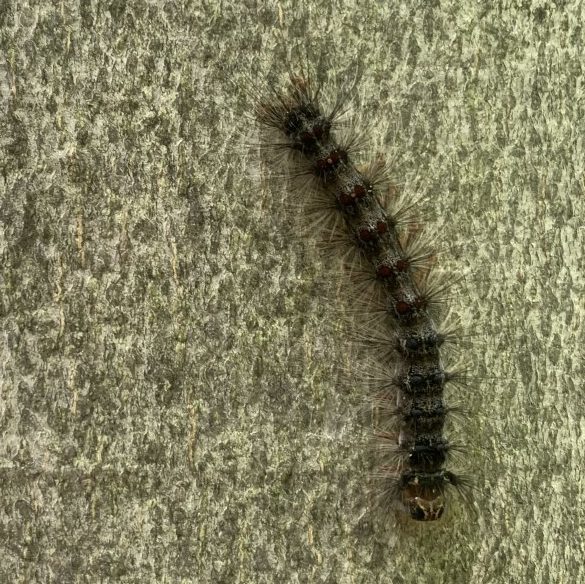
The LDD Moth (Lymantria dispar dispar) is an insect pest that threatens our trees. This invasive alien species has been found on our continent for about 150 years. In the larval stage, it feeds on the leaves of a wide variety of trees and plant species, causing partial or full defoliation of infested trees.
Visible impact: defoliation
In general, the defoliation is partial, which does little damage to trees and does not cause them to die off. Deciduous trees have the ability to produce new leaves later in the summer and thereby manage to generate enough energy to survive.
Full defoliation, however, causes major stress, especially for less hardy trees, which can then die off rapidly.
Cyclical infestations
LDD moth infestations are cyclical: some years there are very few, and others, like in 2021, they are extremely abundant. Natural factors, such as a fungus and a virus that specifically attack LDD moths, reduce the populations and keep them under control. As such, episodes of major defoliation caused by high populations are usually separated by a number of years.
The 2021 infestation was particularly intense in the region and led to significant defoliation in multiple areas. In 2022, severe defoliations are expected again due to a particularly dry start to the spring, which is not conducive to the spread of the natural enemies of LDD moths.
What we’re doing
The NCC monitors the presence of the LDD moth on the lands that it manages. However, it is not planning to take systematic action to control them, since the repercussions are mild in most cases. Also, we are in contact with other regional and provincial stakeholders about this issue. We will work along with our partners to ensure a consistent approach to managing this invasive species.
For following up on potential or confirmed infestations of insect pests, the NCC collaborates with the responsible agencies, namely Quebec’s ministère des Forêts, de la Faune et des Parcs and the Canadian Food Inspection Agency.
It also educates the public about not moving firewood in order to limit the spread of diseases and harmful insects.
What you can do
If you want to reduce the impact of the LDD moth on your property, there are several individual control options. The main one involves physically eliminating accessible caterpillars and clusters of eggs.
You can also apply duct tape to trees that are not yet infested in order to prevent the caterpillars from climbing on them. In fact, the tape’s texture repels the caterpillars, which accumulate on the trunk, under the tape, and therefore can’t reach the foliage.
More information
Documents
- Lymantria dispar dispar or LDD Moth (PDF) (733.289 KB)